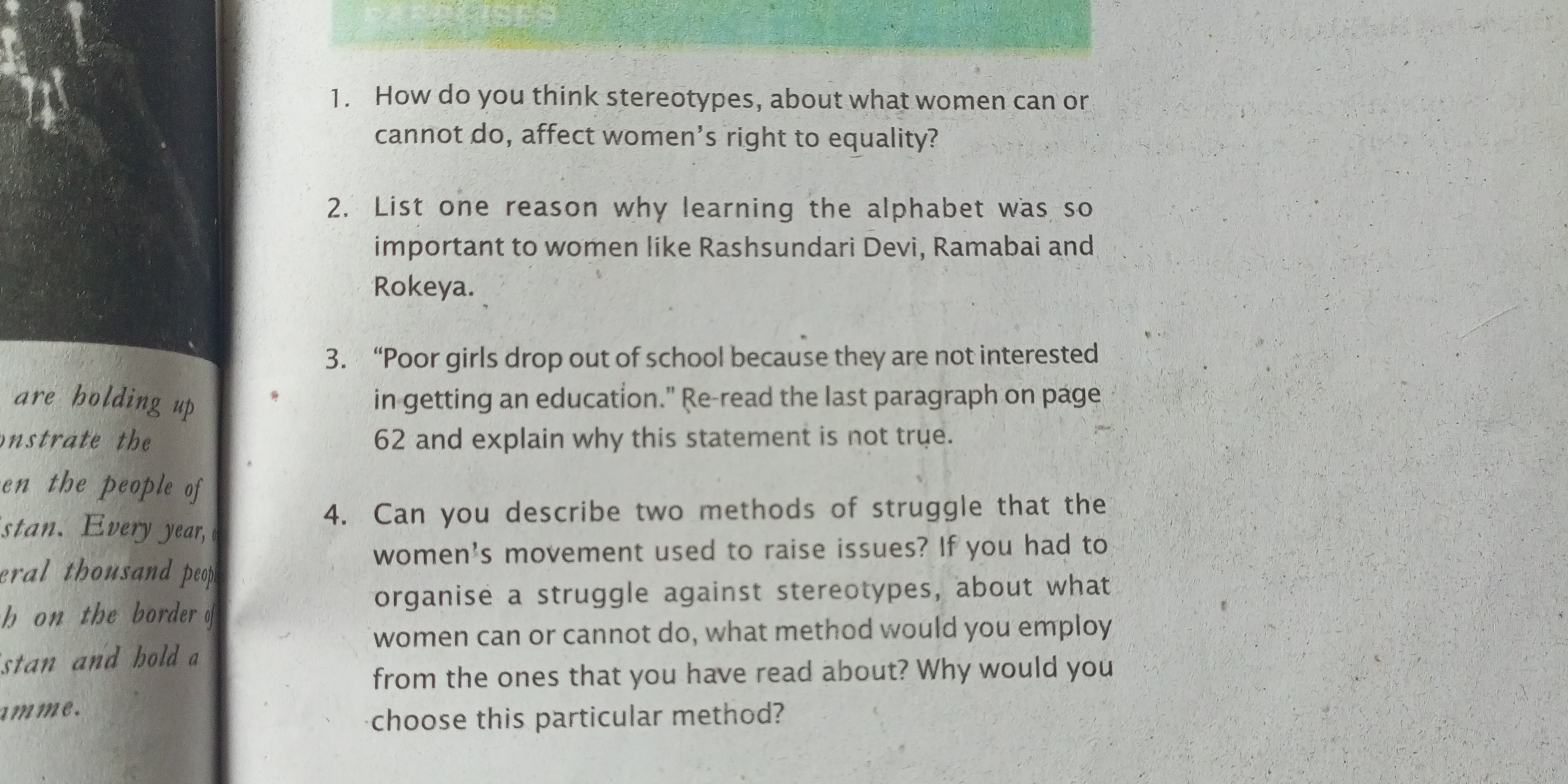1. How do you think stereotypes, about what women can or cannot do, affect women's right to equality? 2. List one reason why learning the alphabet was so important to women like Ra... 1. How do you think stereotypes, about what women can or cannot do, affect women's right to equality? 2. List one reason why learning the alphabet was so important to women like Rashsundari Devi, Ramabai and Rokeya. 3. "Poor girls drop out of school because they are not interested in getting an education." Re-read the last paragraph on page 62 and explain why this statement is not true. 4. Can you describe two methods of struggle that the women's movement used to raise issues? If you had to organise a struggle against stereotypes, about what women can or cannot do, what method would you employ from the ones that you have read about? Why would you choose this particular method?

Understand the Problem
The image contains four questions related to women's rights, stereotypes, education, and the women's movement. The questions require critical thinking, recall of historical information, and the ability to analyze and apply concepts.
Answer
Stereotypes limit women's equality; learning to read empowered early feminists; economic challenges cause dropouts; protests raise awareness.
- Stereotypes can limit opportunities by reinforcing gender roles and restricting women's access to education and employment, undermining equality. 2. Learning the alphabet was crucial for women like Rashsundari Devi, Ramabai, and Rokeya as it opened doors to education and self-expression. 3. Poor girls often drop out due to socio-economic challenges, not lack of interest. 4. The women's movement used methods like public protests and legal advocacy. I'd choose public protests for their ability to raise awareness and unite people.
Answer for screen readers
- Stereotypes can limit opportunities by reinforcing gender roles and restricting women's access to education and employment, undermining equality. 2. Learning the alphabet was crucial for women like Rashsundari Devi, Ramabai, and Rokeya as it opened doors to education and self-expression. 3. Poor girls often drop out due to socio-economic challenges, not lack of interest. 4. The women's movement used methods like public protests and legal advocacy. I'd choose public protests for their ability to raise awareness and unite people.
More Information
Stereotypes often restrict opportunities and maintain inequalities by dictating roles. Access to literacy and education can drastically change personal and social dynamics for women. Economic hardships, not disinterest, often result in poor girls dropping out of school. Public protests are effective in mobilizing support and awareness.
Tips
A common mistake is assuming interest is the main reason for school dropouts without considering economic or social barriers.
AI-generated content may contain errors. Please verify critical information